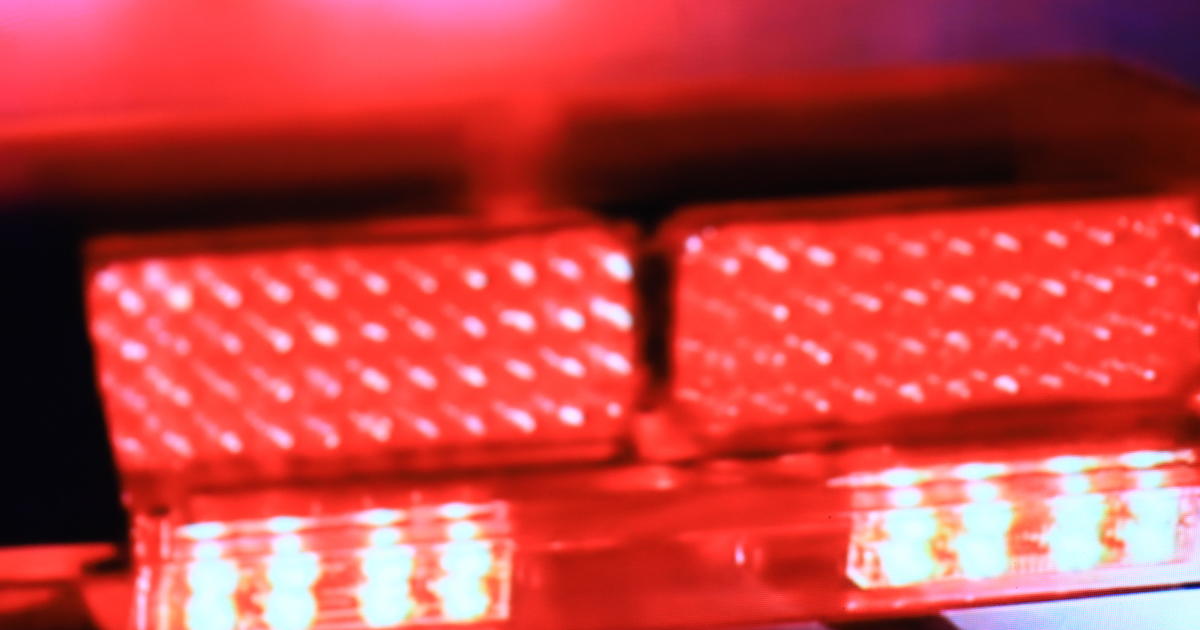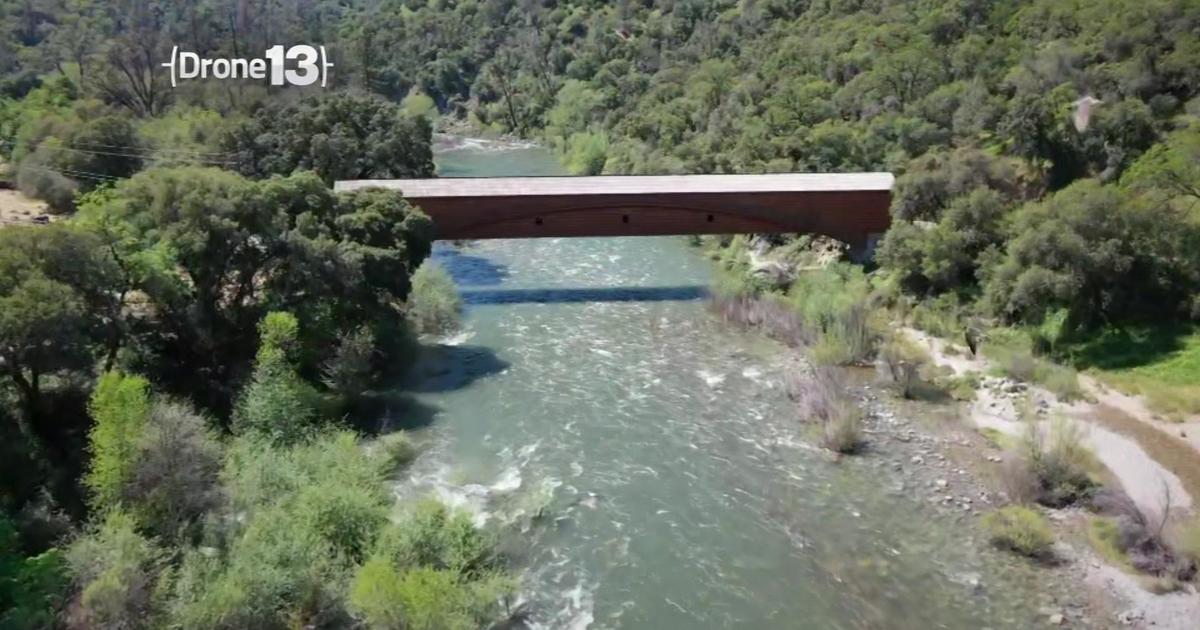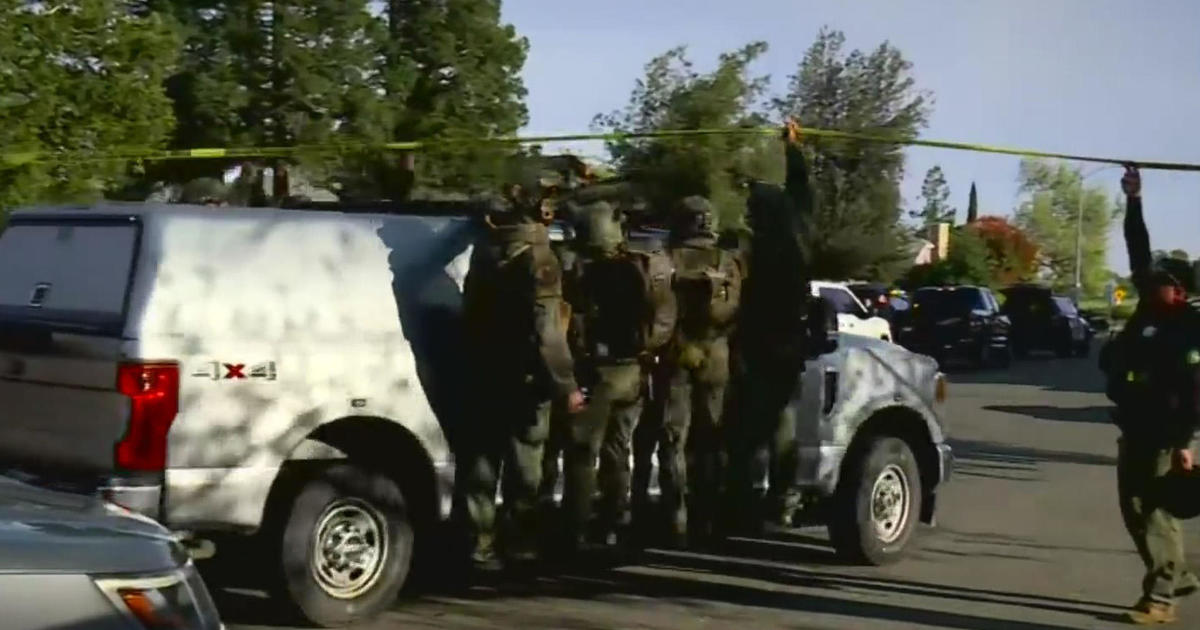Homeowners Concerned: PG&E Injecting Chemicals Beneath Trees On Private Properties
AMADOR COUNTY (CBS13) — Some homeowners are concerned after learning PG&E is injecting chemicals under trees near power lines on private properties in an effort to stunt the tree's growth.
CBS13 has learned that 3,700 Northern California homeowners recently received door tags from PG&E, notifying them that the utility would be injecting a chemical Tree Growth Regulator (TGR) at the base of some trees on their properties unless they contacted the company to opt-out.
Joe Green of Ione, along with many of his neighbors, are among those opting out.
"I don't want to be the guinea pig," Green said. "I think trimming is a much more viable alternative right now to having an unknown chemical inserted into our ground."
One of Green's concerns is that there is not much public information about the potential health effects of the chemical. According to his notice, the brand name is Cambistat, a plant growth retardant and fungicide. The active ingredient, Paclobutrazol, is classified as a toxic chemical by the EPA and the manufactures website says it is "used by arborists as the last step in the pruning process as a way to extend trim cycles, increase profitability, and improve safety."
The chemical would be injected into the soil at the base of the tree where it is absorbed by the roots, reducing branch growth by 40 to 70% for up to four years. The goal is to reduce PG&E's need to prune the treated trees under power lines.
Paclobutrazol does have some benefits. It has been used illegally by some marijuana growers, because, while it does reduce overall growth, it can intensify nutrients making the plant greener and thicker. However, it is a toxic chemical, so treated plants and fruits can't be smoked or ingested.
READ: California Lawmaker Demands Probe Of PG&E's Chief Regulator
The Cambistat label says it cannot be used on fruit or nut trees, and that nearby plants may also be affected. That is a huge concern for Green and his neighbors who grow wine grapes and have organic gardens.
PG&E says it will not use the chemical within 10 feet of a fruit tree, but arborists say roots can grow beyond 10 feet.
The Department of Pesticide Regulation (DPR) tells CBS13 that PG&E's 10-foot barrier goes beyond what's legally required by the label, but they say there is no guarantee fruit trees and other edible plants won't be impacted beyond 10 feet.
DPR says this chemical is relatively low-risk, and they say PG&E is taking precautions by injecting the chemical, which further reduces the risk. However, they say they do not know what the health effects might be if someone ate from a treated or contaminated tree. They say the chemical is not approved for that kind of use, so there simply isn't that kind of health data available.
"We'd really like to see more research done on it before we say, 'yeah, go ahead and put that stuff on the trees around my property,'" Green said.
DPR has not classified the chemical as an air or water contaminant, and PG&E points out, "The active ingredient in TGRs, Paclobutrazol, carries the lowest caution label assigned by the U.S. Environmental Protection Agency."
Animal studies do show potential harm when exposed to high levels in a lab and the chemical is listed as "very toxic to aquatic life with long-lasting effects" by the European Chemicals Agency.
PG&E says only licensed contractors would apply the chemical and the door hangers say the product poses little risk to groundwater, pets, and wildlife.
READ: California Opens Investigation Into Utility Companies Shutting Off Power
Still, Green says, "we'd rather be safe than sorry."
State pesticide records show the product had not been widely used as of 2017, the most recent year the records were available. That's also when PG&E launched its pilot program and has since treated more than 22,000 trees, impacting 9,500 property owners.
PG&E said, "Customers are notified well in advance of the proposed use of TGRs and have the option of opting out should they not want to participate."
However, Green and his neighbors take issue with being forced to opt-out in the first place. They think they should be given the right to opt-in.
They got their notices one week before Christmas, giving them just three weeks to opt-out. "If you're gone, you don't have a chance to notify them," he said.
He thinks many people might miss the notices. Based on numbers provided by PG&E, a little more than 4% of the notified property owners have opted out, so far.
When PG&E first started this pilot program in Fresno, it was an opt-in. They have now expanded to much of Northern California, including their Stockton, Sacramento, Sierra, Yosemite, and North Valley divisions, where they now automatically treat trees unless the property owner actively opts out.
A power company in South Carolina had a similar program but shut it down in the wake of public protest, in part because they also forced people to opt-out instead of opting-in.
PG&E did not say how many more customers would be receiving the notices in the future.



